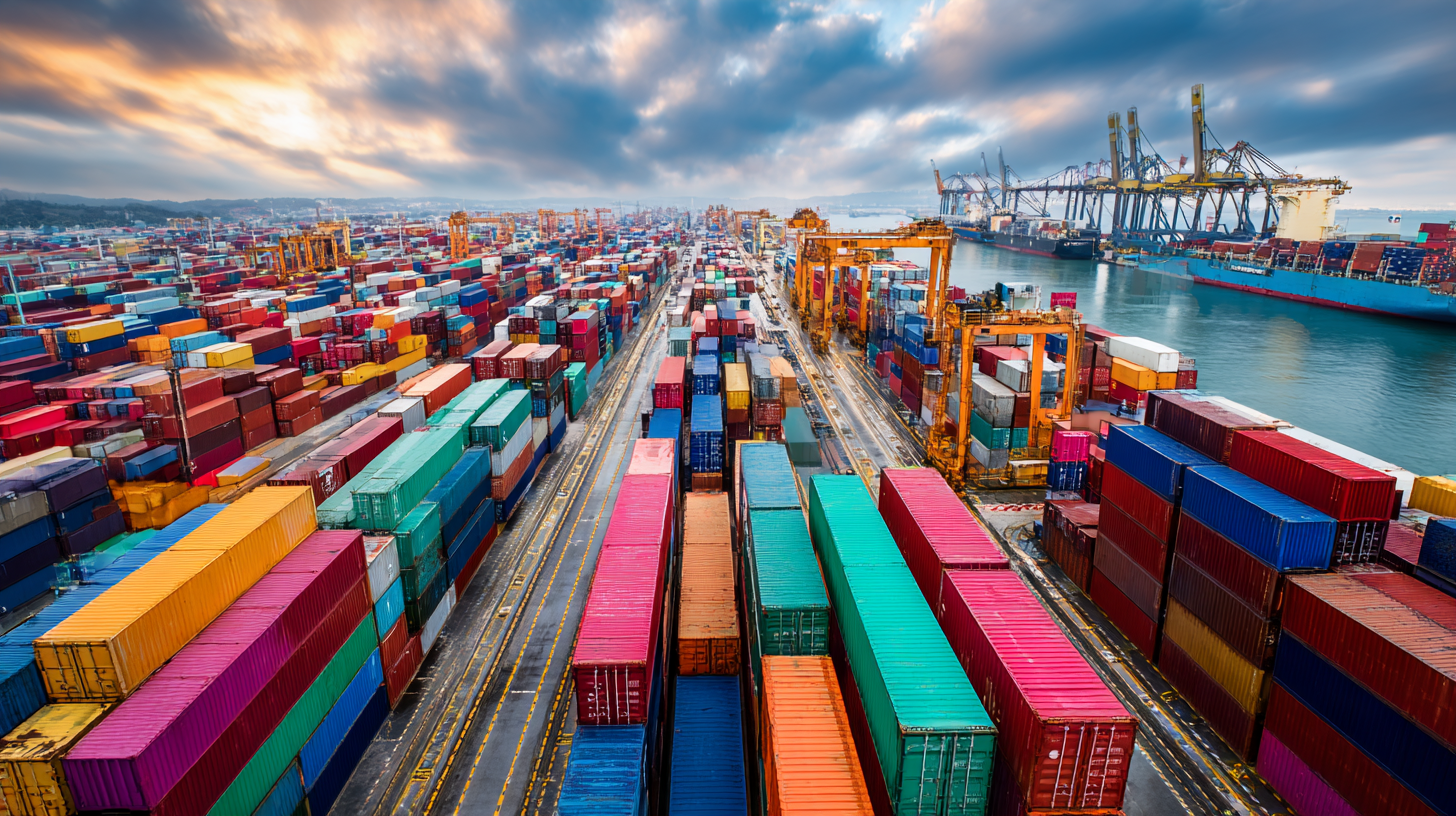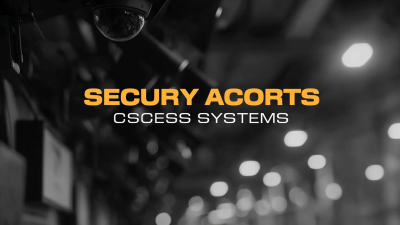Ultimate Guide to Choosing the Best Access Systems for Your Global Procurement Needs
In today's rapidly evolving global marketplace, organizations are increasingly recognizing the critical importance of implementing effective Access Systems to streamline their procurement processes. According to a recent report by MarketsandMarkets, the global procurement software market is expected to reach $9.5 billion by 2025, growing at a CAGR of 10.6%. This growth is driven by the need for enhanced efficiency and transparency in procurement activities, where Access Systems play a pivotal role. By optimizing supplier access and oversights, businesses can significantly reduce costs and improve compliance.

However, choosing the right Access Systems tailored to specific procurement needs is essential for maximizing these benefits. In this ultimate guide, we will delve into key considerations and expert tips to help organizations identify the best Access Systems that align with their strategic goals, ensuring streamlined operations and sustainable growth in an increasingly competitive landscape.
Understanding Global Procurement: Key Considerations for Access Systems
When exploring the realm of global procurement, one of the primary considerations is choosing the right access systems that align with your operational needs. Access systems serve as the backbone of your procurement strategy, enabling seamless communication and transactions across international borders. Factors such as local regulations, ease of integration, and data security protocols should guide your decision-making process.
**Tip:** Always conduct a thorough needs analysis before deciding on an access system. Understand the specific requirements of each region you operate in, as this will inform which features are essential for your business model.
Additionally, consider the scalability of the access system. As your procurement operations expand, your chosen system should be able to accommodate increased activity without compromising performance. This includes the ability to handle varying currencies, languages, and compliance requirements across different countries.
**Tip:** Regularly evaluate the performance of your access systems against your growing needs. This proactive approach ensures that your procurement processes remain efficient and effective in a dynamic global market.
Access Systems Evaluation for Global Procurement Needs
Evaluating Different Types of Access Systems for Your Business Needs
When evaluating access systems for your business needs, it’s essential to consider the specific requirements of your global procurement strategy. Different types of access systems offer varying functionalities, which can significantly impact efficiency and cost-effectiveness. For instance, cloud-based access systems provide the flexibility necessary for international teams, enabling real-time collaboration and data sharing across borders. This can help streamline procurement processes, allowing businesses to respond swiftly to changing market demands.
Moreover, traditional access systems, while offering robust security measures, may not deliver the same level of convenience and integration with modern digital tools. Businesses must assess whether their existing infrastructure can support a shift toward more innovative solutions like RFID technology or biometric access systems. These options can enhance tracking and authentication processes, making procurement operations more seamless. By thoroughly evaluating the strengths and weaknesses of each access system type, businesses can tailor their approach to effectively meet their global procurement needs.
Ultimate Guide to Choosing the Best Access Systems for Your Global Procurement Needs
| Access System Type | Key Features | Best For | Cost Range | Integration Level |
|---|---|---|---|---|
| Cloud-Based Access System | Scalable, remote access, automatic updates | Global Organizations with Remote Teams | $50-$200/month | High |
| On-Premise Access System | Customizable, secure, requires IT support | Organizations with Sensitive Data | $5,000-$50,000 (one-time cost) | Medium |
| Mobile Access Control Systems | Convenient, user-friendly, supports smartphones | Companies with Mobile Workforce | $30-$150/month | High |
| Biometric Access Systems | Highly secure, fast identification, non-transferable | High-Security Facilities | $1,000-$10,000 (one-time cost) | Medium to Low |
| RFID Access Control Systems | Efficient, low-cost, ideal for tracking | Warehouses, Distribution Centers | $500-$5,000 (one-time cost) | High |
Factors Influencing the Selection of Ideal Access Systems Globally
When selecting access systems for global procurement, several critical factors come into play. A 2022 report from the International Supply Chain Institute highlights that 63% of companies prioritize supply chain visibility and real-time data access when choosing access systems. This highlights a growing trend towards integrated technological solutions that enable seamless communication across global networks. Companies often benefit from access systems that can unify procurement processes while providing insights into supplier reliability and inventory levels.
Another influential factor is compliance with regional regulations, which can vary significantly around the world. According to a 2023 study by Compliance Week, 72% of procurement professionals report that regulatory alignment is crucial for their operations, especially in industries like pharmaceuticals and food services. Access systems that offer flexible compliance features help organizations navigate complex regulatory landscapes efficiently. As global procurement becomes increasingly complex, understanding these factors is essential for organizations aiming to implement the most effective access systems tailored to their needs.

Integrating Technology in Access Systems to Enhance Procurement Efficiency
In today's rapidly evolving global marketplace, integrating advanced technology into access systems is essential for enhancing procurement efficiency. With the complexities of international supply chains and diverse regulations, organizations must leverage state-of-the-art solutions that not only streamline operations but also ensure compliance and security. Access systems equipped with automated features, such as RFID tracking and biometric verification, minimize the risks associated with manual processes, allowing businesses to maintain real-time visibility over their procurement activities.
 Moreover, the adoption of cloud-based platforms enables seamless collaboration among teams dispersed across different regions. These technologies facilitate easy access to critical data and streamline communication efforts, resulting in reduced lead times and improved decision-making. By harnessing analytics and reporting tools, procurement professionals can identify trends, optimize supplier relationships, and make informed choices that drive cost savings and value creation. Ultimately, integrating technology into access systems empowers organizations to navigate the complexities of global procurement with greater agility and efficiency.
Moreover, the adoption of cloud-based platforms enables seamless collaboration among teams dispersed across different regions. These technologies facilitate easy access to critical data and streamline communication efforts, resulting in reduced lead times and improved decision-making. By harnessing analytics and reporting tools, procurement professionals can identify trends, optimize supplier relationships, and make informed choices that drive cost savings and value creation. Ultimately, integrating technology into access systems empowers organizations to navigate the complexities of global procurement with greater agility and efficiency.
Best Practices for Implementing Access Systems Across Global Supply Chains
Implementing access systems effectively across global supply chains requires a strategic approach that aligns with best practices. According to a report by Gartner, companies leveraging advanced access systems in their supply chains can see up to a 30% improvement in efficiency and a significant reduction in operational costs. This highlights the importance of selecting a robust system that can integrate seamlessly into existing frameworks.
Tip: Before choosing an access system, conduct a thorough assessment of your current supply chain operations. Identify bottlenecks and areas where access control can enhance security and efficiency. This evaluation will ensure that the implemented system addresses specific needs and maximizes ROI.
Furthermore, ensure that your access systems are adaptable to the diverse regulatory environments across different regions. A study from McKinsey & Company indicates that businesses failing to comply with local regulations can incur penalties amounting to 10% of their annual revenue. Therefore, selecting systems that offer customizable features can help mitigate risks connected to compliance while enhancing overall supply chain performance.
Tip: Invest in training for staff on the new access systems to ensure smooth implementation. Engaged employees who understand the benefits and operational nuances of the systems can drive more significant success in supply chain management.
Related Posts
-

Digital Innovations in Best Access Control Security Solutions
-

Understanding Import and Export Certifications for Best Security Access Control Systems
-

Global Trust in Chinese Manufacturing Delivering Consistent Quality in the Best Access Control Systems
-

What Are Door Access Cards: Essential Insights for Global Buyers
-

Top Strategies for Implementing an Effective Access Card System in Modern Workplaces
-

Essential Access Control Panel Checklist: Your Key to Enhanced Security Management
- • HighpowerOne Touchscreen Controller • HighpowerOne Mobile Credential App
- Highpower Management System
- • Pushplate 100 PNZ
- • Pushplate 110 PNZ
- • Pushplate 120/140 PNZ
- • Pushplate 130/150 PNZ
- • Pushplate 200 PNZ
- • Pushplate 100
- • Pushplate 110
- • Pushplate 120/140
- • Pushplate 130/150
- • Pushplate 200
Mechanical Timers
Proximity ID Access Cards and Fobs
Proximity Card Readers
- • Proximity Reader P-300
- • Proximity Reader P-400
- • Proximity Reader P-500
- • Proximity Reader P-620
- • Proximity Reader P-640
- • Proximity Reader P-710
- • Proximity Reader P-900
- • Ranger Proximity Readers
- • Ranger Controls
- • Sure-Fi Wireless Interfaces
Smart Series JX Readers
Electromagnetic Locks
Highpower Power Supplies
• H505
• H512
Security Products Summary
